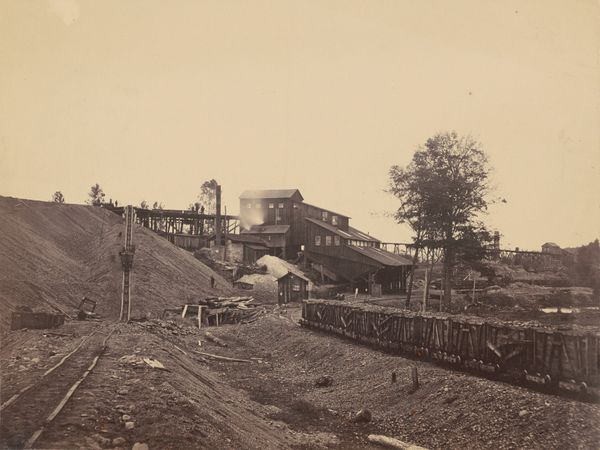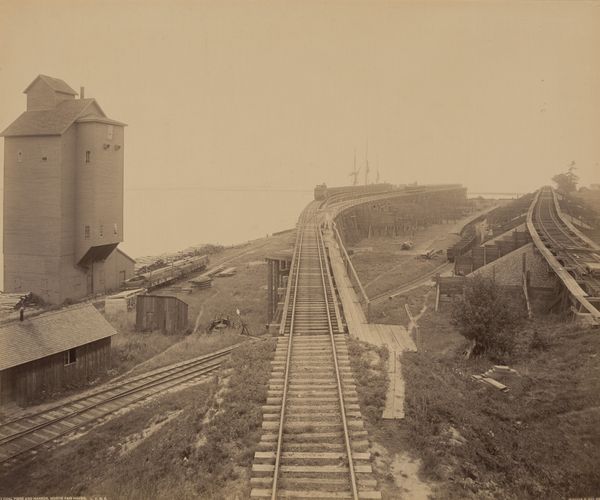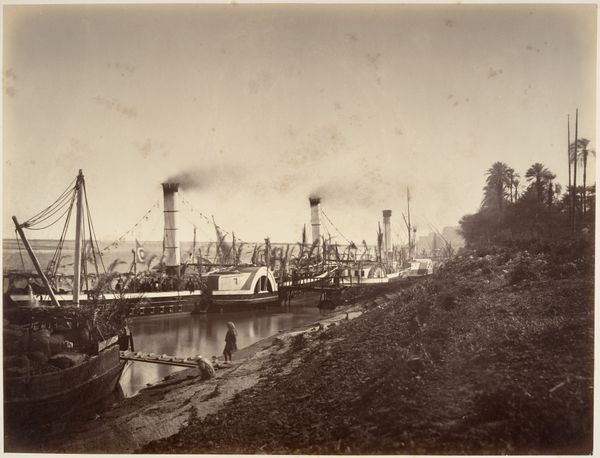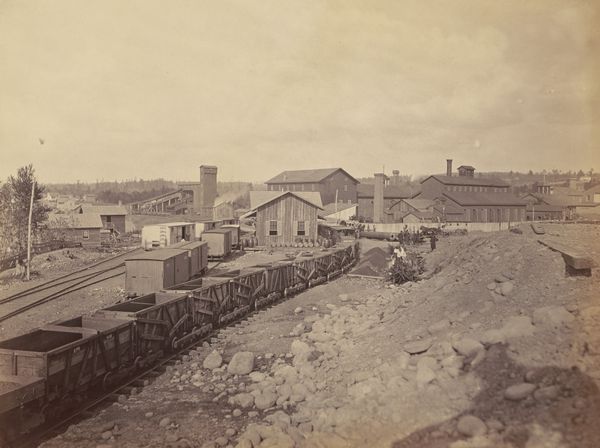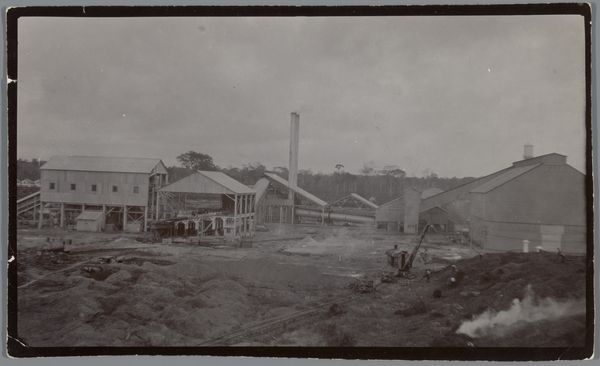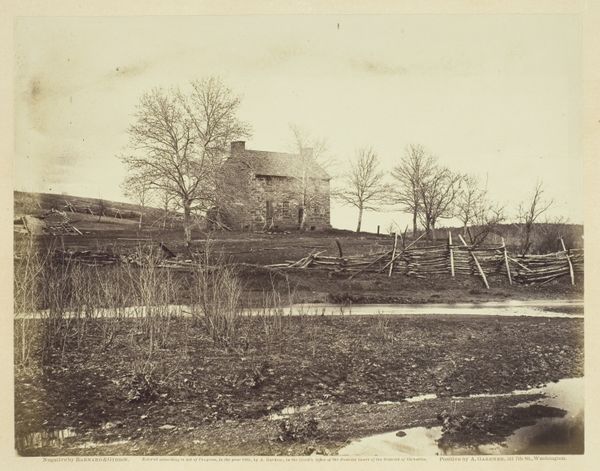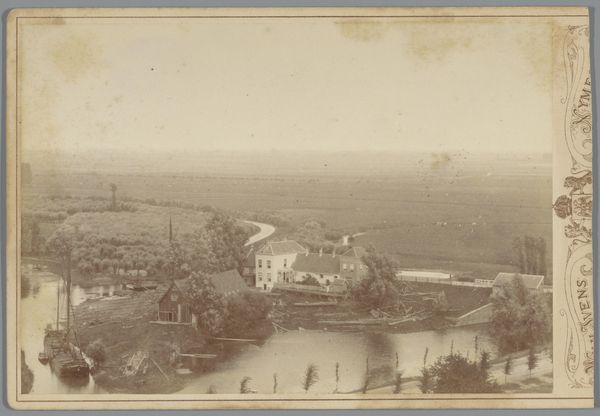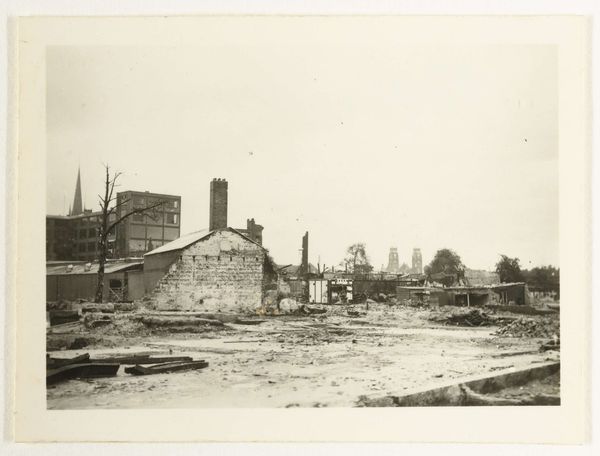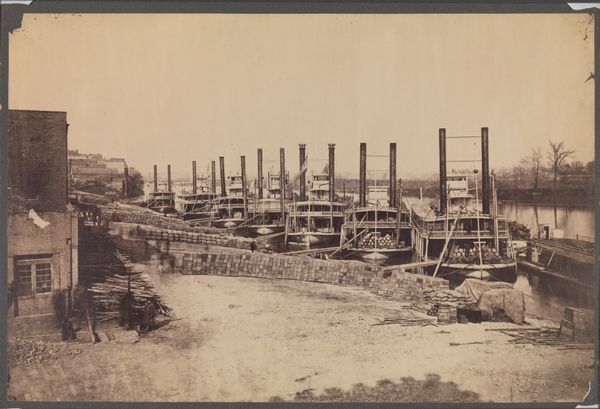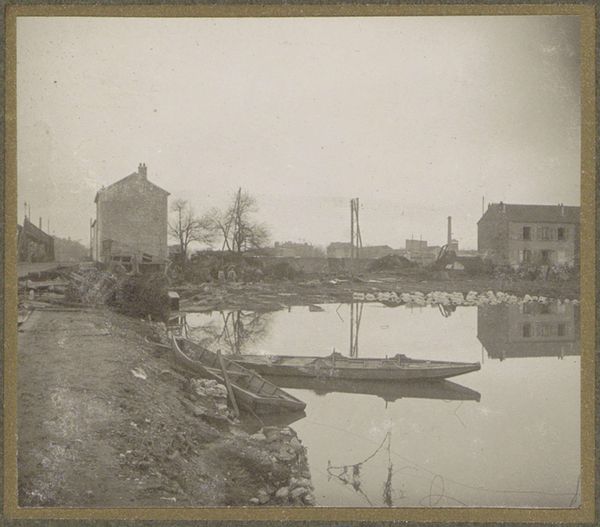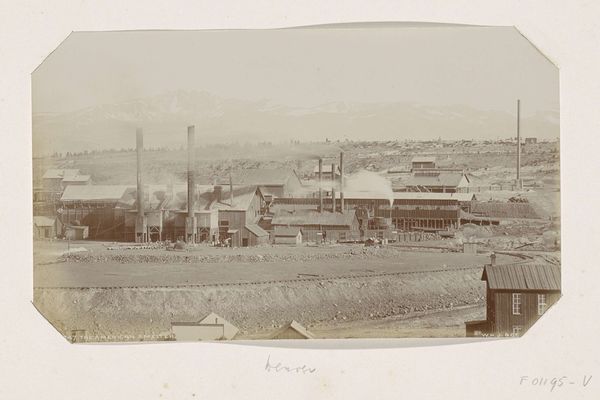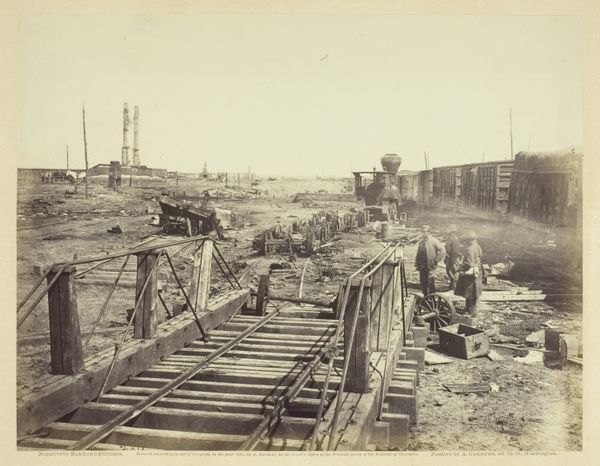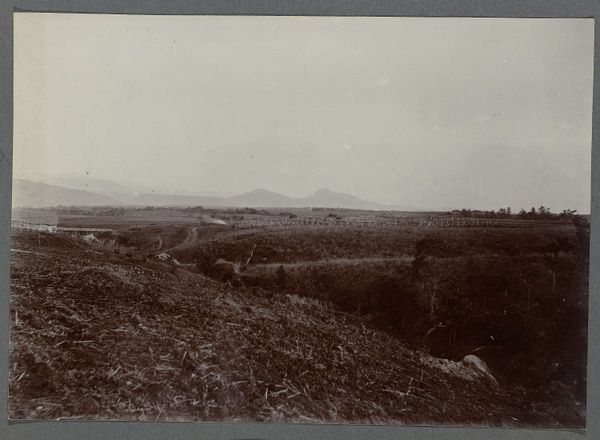
photography, gelatin-silver-print
#
landscape
#
photography
#
gelatin-silver-print
#
19th century
#
fog
#
realism
Dimensions: image: 31.75 × 40.64 cm (12 1/2 × 16 in.) framed: 52.07 × 62.23 × 2.54 cm (20 1/2 × 24 1/2 × 1 in.)
Copyright: National Gallery of Art: CC0 1.0
Curator: Henry Frey's gelatin-silver print, "Oxford Breaker," circa 1895, presents a captivating industrial scene. Editor: It feels so weighty, doesn’t it? All those muted sepia tones just seem to press down on the landscape, and the heavy, imposing structures really emphasize the immensity of it. There’s a certain starkness to it that almost feels…lonely. Curator: Absolutely. The image invites a conversation about labor, industry, and the rapidly changing landscapes of the 19th century. Notice the relationship between the mine infrastructure, and what can be perceived in the backdrop as civil infrastructure represented through churches and civil infrastructures.. What implications can we derive from them being interconnected but distant? Editor: The sheer scale makes you wonder about the human cost. I'm suddenly picturing the lives intertwined with that machinery, the stories held within those walls. It is, perhaps, in direct competition with the function and value of religion or common congregation. A separation so near yet so far... Curator: Precisely. Consider also the photographic technique itself. The gelatin-silver print process allowed for greater detail and tonal range compared to earlier methods. The image's realistic style would reflect the shifting societal concerns around class, labor and urbanization during the end of the century. The fog softens the backdrop—blurring elements such as people, trains, buildings, giving prominence and priority to the central machinery, and perhaps hinting at both opportunity and obscuration in industry. Editor: The softness almost adds to the unease, if you ask me. It obscures some of the stark edges and somehow renders the scene even more ghostly. This reminds me of my own childhood; these environments often present unique social relationships and power dynamics. In fact, as I observe, it also invokes complex reactions because the breaker can also suggest exploitation and resilience. Curator: And perhaps it’s through that very tension – the exploitation and the resilience – that we come to better understand not just this photograph, but also the broader complexities of our shared history. It underscores the significance of acknowledging that intersection. Editor: You know, looking at it one last time, I get this odd sense of…quiet triumph mingled with deep uncertainty. Like a chapter in our ongoing story, both promising and a bit ominous. Thanks for guiding me through that.
Comments
No comments
Be the first to comment and join the conversation on the ultimate creative platform.
